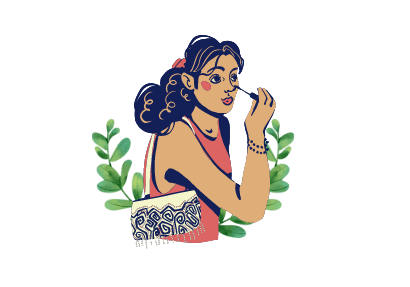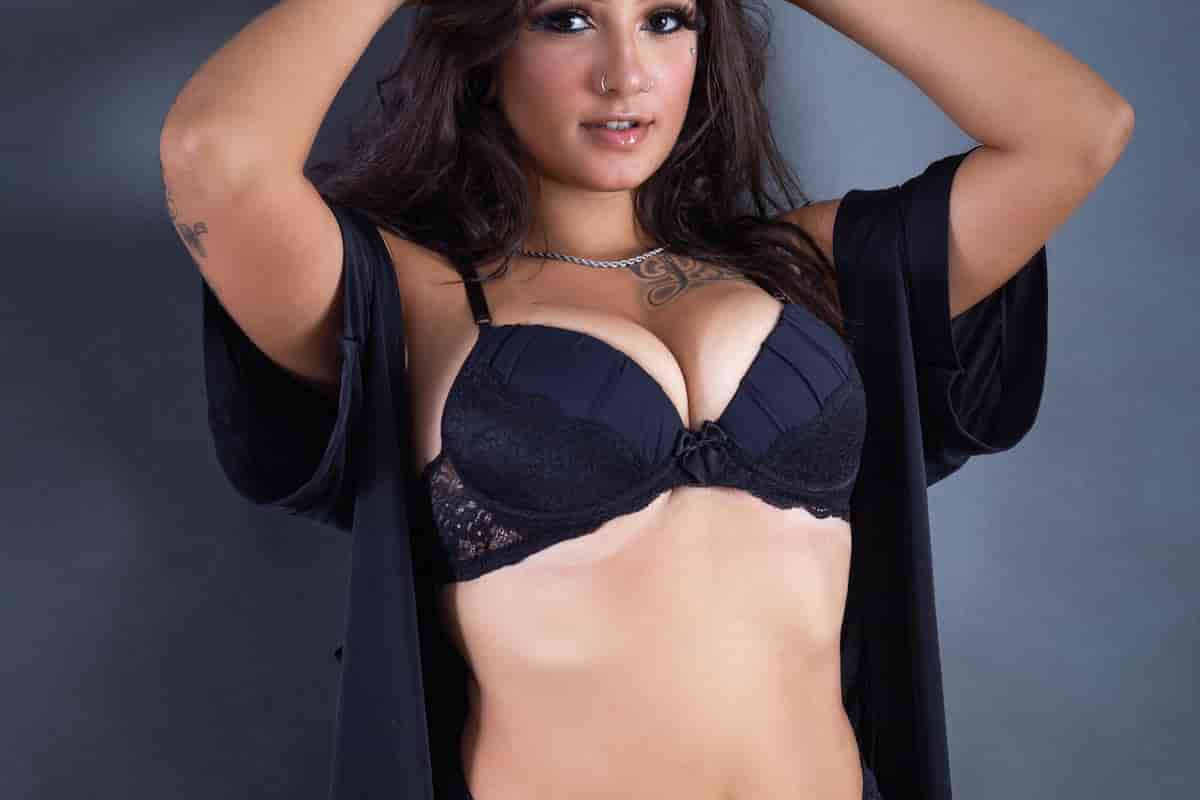Here is your complete guide to an overflowing bra.
Introduction to Overflowing Bra
An overflowing bra is a common yet frustrating issue many women face. It happens when breast tissue spills over the edges of the bra cup, causing discomfort and an unflattering silhouette. In this comprehensive guide, we will explore everything you need to know about overflowing bras — from understanding what it means, why it happens, to how you can prevent and fix it. Whether you’re struggling with spillage or just want to improve your bra fit, this article will provide detailed, practical advice to help you feel confident and comfortable.
An overflowing bra occurs when breast tissue spills over the top, sides, or underarms of the bra cup. This issue can affect women of all shapes and sizes and often leads to discomfort, poor posture, and dissatisfaction with how clothes fit. Many women experience this problem but don’t realize it often stems from wearing the wrong bra size or style.
In this article, we’ll discuss the main causes of an overflowing bra, including incorrect sizing, body changes, and unsuitable bra styles. We will also provide actionable tips on how to identify if your bra is overflowing, how to get the perfect fit, and which bra styles offer the best support to prevent spillage. Additionally, we’ll answer frequently asked questions to clear up common confusions.
By the end, you’ll understand how to avoid the frustration of an overflowing bra and find bras that flatter your figure while providing all-day comfort.
What Is an Overflowing Bra?
An overflowing bra means the breast tissue is not fully contained within the cup. Instead, it spills over the edges, creating bulges or “quad-boob” effects. This is different from other fit issues like gaping (cups too large) or loose bands.
Signs of an Overflowing Bra:
- Breast tissue bulging over the top or sides of the cup
- Visible lines or lumps under clothing
- Straps digging into shoulders due to compensating for poor support
- Discomfort or pain from tight cups
| Fit Issue | Description | Visual Signs | Comfort Impact |
|---|---|---|---|
| Overflowing Bra | Breast tissue spills over cup edges | Bulging, quad-boob effect | Tightness, digging straps |
| Gaping Bra | Cup too large, gaps at edges | Empty space in cups | Lack of support |
| Loose Band | Band too big, poor support | Bra rides up | Back pain, poor lift |
Understanding this difference helps you know if you need a bigger cup, a different style, or a better band fit.
Common Causes of an Overflowing Bra
Several factors cause an overflowing bra, often related to fit and body changes.
Main Causes:
- Incorrect Cup Size: Wearing a cup size too small is the most common cause. The cups don’t have enough volume to contain the breast tissue, causing spillage.
- Wrong Band Size: A band that’s too loose can cause the bra to ride up, misaligning cups and pushing breast tissue out.
- Weight Fluctuations: Gaining weight or hormonal changes (pregnancy, breastfeeding, menopause) can increase breast size temporarily or permanently.
- Unsuitable Bra Style: Some styles don’t provide enough coverage or support for certain breast shapes, leading to overflow.
- Worn-Out Bras: Over time, bands stretch and cups lose shape, reducing support and causing spillage.
| Cause | Description | Recommended Solution |
|---|---|---|
| Wrong cup size | Cup too small for breast volume | Get professionally fitted |
| Weight gain/loss | Changes breast size and shape | Reassess bra size regularly |
| Hormonal changes | Swelling or shrinking breast tissue | Choose adjustable styles |
| Pregnancy/Breastfeeding | Temporary size increase | Use nursing or stretchy bras |
| Unsuitable bra style | Style doesn’t support shape well | Try styles with better coverage |
How to Identify If You Have an Overflowing Bra
Recognizing an overflowing bra early can save you discomfort and improve your look.
Signs to Look For:
- Breast tissue visibly spilling over cup edges
- Straps digging into shoulders or slipping off
- Underwire or band feeling too tight or causing pain
- Bulges under clothing disrupting smooth lines
How to Check at Home:
- Mirror Test: Look at your breasts in a mirror wearing your bra. Check for spillage over the top or sides.
- Movement Test: Raise your arms or move around to see if breast tissue escapes the cups.
- Fit Checklist:
- Cups fully encase breasts without bulging?
- Band feels snug but comfortable, stays in place?
- Straps adjusted to support without digging?
- No gaps or wrinkles in cups?
If you answer “no” to any, it may be time to adjust your size or style.
Best Bra Styles to Prevent Overflowing Bra Issues
Choosing the right bra style is essential to prevent overflowing bra problems. Different styles offer varying levels of coverage and support.
| Bra Style | Coverage Level | Support Level | Best For Breast Shape |
|---|---|---|---|
| Full Cup | High | High | Full, pendulous breasts |
| Balconette | Medium | Medium | Round, uplifted shape |
| Plunge | Low to Medium | Medium | Cleavage, smaller breasts |
| T-shirt Bra | Medium | Medium | Everyday wear, smooth look |
Style Highlights:
- Full Cup Bras: Provide maximum coverage and support, ideal for larger or fuller breasts prone to spillage.
- Balconette Bras: Offer moderate coverage with a horizontal neckline, good for uplifted shapes but may not suit very full breasts.
- Plunge Bras: Lower cut cups that enhance cleavage but may not contain larger breasts fully.
- T-shirt Bras: Smooth cups for everyday wear, best for moderate sizes without overflow issues.
Fabric & Construction Tips:
- Look for bras with firm bands and underwire for better containment.
- Cups with molded or thicker fabric help shape and hold breast tissue.
- Higher sides and wider straps distribute weight and reduce overflow.
How to Get the Perfect Bra Fit to Avoid Overflowing Bra
A well-fitted bra is the key to preventing overflowing bra problems.
Step-by-Step Measuring Guide:
- Measure Band Size:
- Use a soft tape measure around your ribcage, just under your breasts.
- Keep the tape snug but not tight.
- Round to the nearest whole number.
- Measure Bust Size:
- Measure around the fullest part of your breasts, keeping the tape level.
- Round to the nearest whole number.
- Calculate Cup Size:
- Subtract band size from bust size.
- The difference corresponds to cup size (e.g., 1 inch = A, 2 inches = B, etc.).
Professional Fitting:
- Visit a lingerie store for a professional fitting at least once a year.
- Sizes can change due to weight, age, or hormonal changes.
Adjusting Your Bra:
- Straps should be snug but not dig into shoulders.
- Band should fit firmly around your torso and stay parallel to the ground.
- Scoop and swoop breast tissue into the cups when putting on your bra.
| Measurement Step | How to Measure | Tips |
|---|---|---|
| Band Size | Under bust, snug tape | Exhale fully, keep tape level |
| Bust Size | Fullest part of breasts | Stand straight, tape level |
| Cup Size Calculation | Bust size – band size | Use size chart for cup letter |
Tips for Managing Overflowing Bra During Weight Fluctuations and Life Changes
Breast size can fluctuate due to pregnancy, breastfeeding, menopause, or weight changes. Managing an overflowing bra during these times requires flexibility.
Tips:
- Choose bras with stretchy fabrics or adjustable features.
- Consider nursing bras during pregnancy and breastfeeding for comfort and expansion.
- Replace bras regularly as your size changes.
- Schedule frequent fittings to update your size.
- Avoid tight bands or small cups during swelling phases to prevent discomfort.
Common Mistakes That Lead to Wearing an Overflowing Bra
Avoid these pitfalls to prevent spillage and discomfort:
- Buying bras without measuring your current size.
- Sticking to old sizes despite body changes.
- Choosing style over fit, ignoring coverage needs.
- Ignoring signs of poor fit like bulges or pain.
- Wearing worn-out bras with stretched bands and misshapen cups.
Frequently Asked Questions (FAQs) About Overflowing Bra
What causes an overflowing bra?
Mostly wearing the wrong cup size or band size, hormonal changes, or unsuitable bra styles.
How do I know if my bra is overflowing?
Look for breast tissue spilling over cup edges, bulges under clothing, or discomfort.
Read Also: Half Cup Bra.
Can an overflowing bra cause health issues?
Yes, it can cause pain, poor posture, and skin irritation.
Read Also: Youngsters Bikini.
How often should I get fitted for a bra?
At least once a year or after significant weight or body changes.
Read Also: E Cup Bra.
What bra styles are best for preventing overflow?
Full cup and bras with higher coverage and firm bands.
Read Also: G Cup Bras.
Can weight gain cause an overflowing bra?
Yes, increased breast volume can cause spillage if the bra size is not adjusted.
Read Also: Half Cup Bras.
How to fix breast spillage in a bra?
Try a larger cup size, adjust straps and band, or switch to a better-fitting style.
Read Also: Breast C Cup.
Conclusion
An overflowing bra is a common but solvable issue. The key is knowing your correct size, choosing the right bra style, and regularly checking your fit. Don’t settle for discomfort or unflattering bulges—invest in bras that support and flatter your shape. Remember, your body changes over time, so keep updating your bra wardrobe to maintain comfort and confidence.
Read Also: H Cup Bras.
References and Resources:
- How To Solve Bra Overflow – WAMA Underwear.
- Are Your Boobs Spilling Out of Your Bra? 5 Solutions | Glamorise.
- Bra – Wikipedia.
- Breast shape | Bustyresources Wiki | Fandom.
- 5 Signs Your Bra Is Too Tight (and How to Fix It) – Healthline.
- Adventures in Bra Sewing: Figuring Out Fit Part 2 – Doctor T Designs.
- Comparative Morphological Evaluation of Young Women’s Breast.

